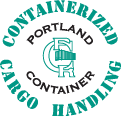Summary
This document outlines the best practices for the calculation and billing of port standby and congestion.
Definitions
Terminal – A marine or off-dock terminal that takes in (in-gates) or gives out (out-gates) shipping containers.
Congestion – The time a truck spends past the provided Free Time waiting at a terminal after passing through the entrance to the queuing area, which has a root cause in terminal operation.
Port Standby – The time a truck spends past the provided Free Time waiting at a terminal, after passing the designated entrance, which has a root cause in non-terminal operations or actions of Portland Container. Examples include, but are not limited to, customs hold, line hold, etc.
Entrance – This is a specific point designated for each terminal, designated by Portland Container.
Single Transaction – Once a truck completes all business at a terminal, it either departs or arrives without a container.
Dual Transaction – When a truck completes all business at a terminal, it both arrives and departs with a container.
Free Time – The amount of time the truck is at a terminal that is listed on the customer’s rates and is not subject to additional charges.
Visit – When a truck crosses the designated entrance and exit. An in-gate, out-gate, or trouble ticket is required to constitute a visit.
Congestion Calculation Types
Always – This is a fixed congestion charge billed on every TMP regardless of the presence of congestion at the time of the movement. This type of billing is noted on invoice as Term Congest A.
Occurrence – This is a variable charge based on a per-hour billing rate that applies after all the free time provided in the customer quote has been consumed. The variable per-hour rate is billed in fifteen-minute increments and has a minimum billing requirement of thirty minutes. Standard rounding rules apply for time calculation. This type of billing is noted on invoice as Term Congest O.
Custom – Some customers have specific requirements or allowances for port congestion. Refer to the customer’s quote for details. In the case of a “no bill” customer or a customer that will not accept congestion billing, the Custom indicator will be used. This type of billing is noted on rate quotes and in Profit Tools with a capital C, the word Custom, or no bill. Quotes without a calculation type indicator, but listing a rate, will be billed at the flat rate listed on the rate quote and paid under the Custom methodology. This type of billing is noted on invoice as Term Congest C.
Congestion Combined – Congestion is a charge that can be combined. Congestion Combined should be handled in the same way as the Always standard.
Port Standby
Port Standby is to be billed in fifteen-minute increments, based on the standby charge rate on the rate quote. This type of billing is noted on invoice as Port Standby. Congestion and Port Standby cannot be billed for the same visit to the terminal. In a case where events qualifying for congestion and standby both occur during the same visit, congestion will be the default billing line item.
Validation & Time Calculation
All congestion and port standby charges will be validated using GPS tracking. No billing will be transmitted to a customer for port standby or congestion without express approval from a senior manager if GPS track data is not available.
Unless the Custom indicator is used, all individual transactions are based on sixty (60) minutes of free time per visit. In the case of a dual transaction, one and ninety (90) minutes of free time per visit will be used.
Communication
Dispatch will transmit via email a notice of port standby or congestion charges as soon as possible. In the event the truck departs after the close of business, the dispatch will transmit the total charges the following business day by 9 am.
Customer Disputes
If a customer disputes congestion charges, dispatch, billing, or order entry should professionally respond with copies of backup data, e.g., GPS tracks, EIRS, etc. If the customer still disputes charges, the customer should be referred to Business Development for resolution. When referring customer disputes to Business Development, include a brief, one- or two-sentence summary of the customer's complaint and the actions already taken in the email, along with all supporting data.




